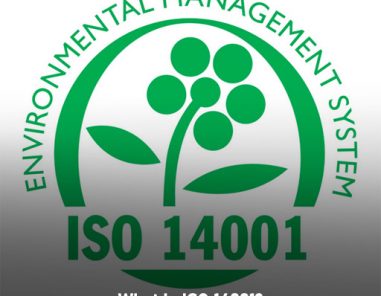
What is ISO 14001? Definition of Environmental management systems
The ISO 14001 standard is the leading standard for designing and implementing...
Read MoreThe plan-do-check-act (PDCA) cycle is the operating principle behind all ISO standards, including the ISO 14001. This cycle provides a constant process that allows organisations to achieve ongoing improvement. The PDCA framework is not only applied to the overall Environmental Management System (EMS), but to each of its individual elements. Additionally, utilising the PDCA cycle within the ISO 14001 framework ensures transparency of the processes, helping to highlight opportunities for improvement. Consequently, the likelihood of legislature breaches and potential fines is significantly reduced.

In the implementation of ISO 14001, the concept of the PDCA model has minor differences:
With reference to ISO 14001, this step involves establishment of environmental processes and objectives that are necessary to achieve outputs in conformity with the organisation’s environmental policy. For effective planning, a gap analysis is recommended as it allows organisations to understand which processes and products interact with the environment.
This is known as environmental aspects and reviewing these aspects help organisations to establish their environmental objectives, goals and targets in a measurable manner. Knowing the requirements of ISO 14001 will help you a lot at this stage.
During this stage, organisations identify the resources required and the personnel of the organisation responsible for the EMS implementation and management. Here, organisations must establish procedures and processes required to improve management over documentation control, emergency repairs and response.
During this stage, the processes are monitored and measured against the organisation’s environmental policy. Here, organisations must monitor performance periodically to ensure that the environmental targets and objectives are being met. Another key element of this step is internal audits that are conducted at planned intervals to ascertain whether the EMS meets the user’s expectations and if the processes are being adequately maintained. In the ISO 14001 audit checklist, these items are checked in the most detailed way.
During this stage, actions are taken in order to continually improve the EMS. After the completion of the check stage, the organisation must conduct a management review to ensure that the objectives and targets of the EMS are being met. The extent to which the objectives are being met and the communication needs that are required to evaluate the changing circumstances must also be identified to make continual improvement to the EMS.

The construction of the clauses of the ISO 14001 are done in such a manner that the PDCA format is utilised in all the processes of an organisation. In all these steps, you can benefit from the help of ISO consulting in Australia.
when talking about the “plan” stage, one must begin by understanding the context of their organisation and the expectations of the interested parties. These are defined in clauses 4.1 and 4.2. Similarly, clause 4.3 helps an organisation determine their EMS scope and clause 4.4 helps to define the EMS.
Clause 5.1 helps organisations to identify their leadership commitment and clause 5.2 allows them to set their environmental policy. The additional roles, responsibilities and authorities can be identified and defined as further recommendations outlined in clause 5.3. Planning continues as an organisation addresses the risks and opportunities within the EMS, including how the organisation interacts with the environment and their legal compliance.
Legal compliance obligations are defined in clause 6.1 and environmental objectives for improvement are described in clause 6.2. The final stage of the planning for the EMS involves identification of appropriate support processes. Clause 7.1 can be used to assign resources, identify competence requirements and training programs.
Similarly, when talking about the “do” stage, clause 8 describes in detail the processes that are required to establish a successful EMS. Close 8.1 provides guidance on the implementation of operational controls which can reduce the effect of environmental aspects. In the same vein, clause 8.2 helps organisations create plans for emergency preparedness and response so that anticipatory interventions are in place if emergencies arise.

Furthermore, clause 9 of the ISO 14001 standard entitled “performance evaluation” aligns with the “check” step of the PDCA cycle. This section provides guidelines for monitoring, measuring and analysing the key characteristics of the organisations that may have a considerable impact on the environment as well as evaluate their compliance status. Clause 9.2 also includes the second method of checking the effectiveness of the EMS, namely the guidelines for internal audits.
Internal audits are a systematic way to review the processes of the EMS to validate that they are meeting the planned arrangements that are set out for them. The final section of the performance evaluation involves having the management of the organisation review the data collected in checking these processes. This step is called the management review and it’s details are outlined in clause 9.3.
Lastly, the final section of the standard entitled “improvement,“ aligns with the “act“ stage of the PDCA cycle. This section includes guidance for dealing with non-conformity through the provision of preventive and corrective actions. Clause 10.2 lists different corrective actions that are needed to fix problems found during the performance evaluation. The purpose of this activity is to react to the data gathered and make necessary adjustments for improving the EMS. If previous objectives have been appropriately met, then new targets can be chosen.
However, if there are problems identified in achieving an objective, then resources need to be allocated and adjustments need to be made. The guidance for reviewing and adjusting resources for continual improvement are outlined in clause 10.3. This phase allows the organisations to modify their plans so that the process of improvement is cyclic. As a result, at the end of this stage, the plan-do-check-act cycle starts again.
ISO certification gives your organisation a competitive edge. By helping you increase operational efficiency and overall product consistency, your business credibility and authority will soar to new heights.

Copyright © 2022 The ISO Council | Privacy Policy